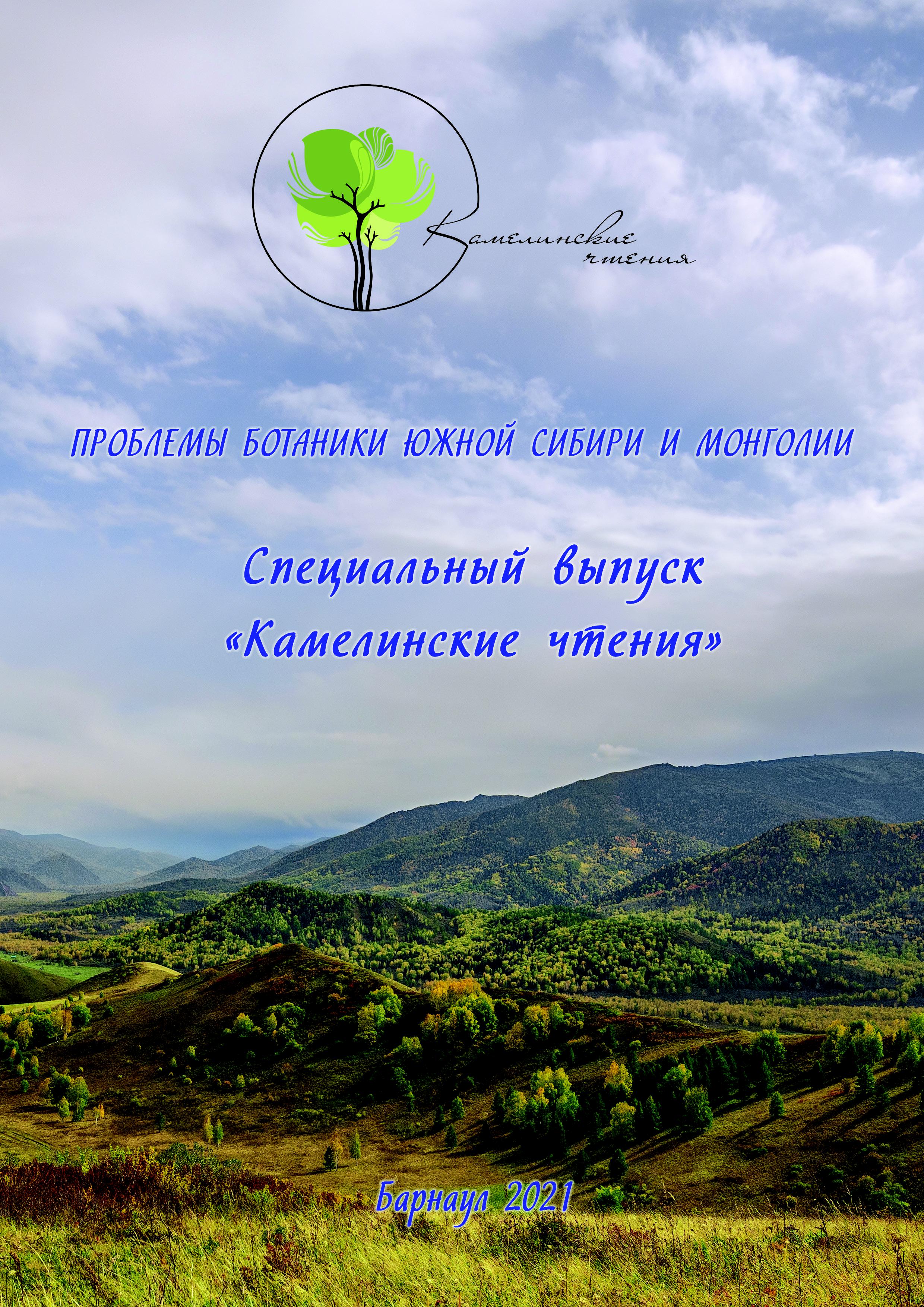The problem of identification of invasive species of Heracleum on the territory of the Komi Republic
УДК 582.893.6(470.13)
DOI:
https://doi.org/10.14258/pbssm.2021136Keywords:
DNA barcoding, Heracleum mantegazzianum, Heracleum sosnowsky, nvasive species, Komi Republic, invasive speciesAbstract
According to literature, Heracleum mantegazzianum Somm. et Lev. and H. sosnowskyi Manden. (Apiaceae Lindl.) can be considered as ecological twins in a number of traits. There are still many uncertainties in the taxonomy of the genus Heracleum, and there are cases of interspecific hybridization. The process of identification was not always carried out and documented well during the introduction of plants of this genus in many regions of Europe. The authors collected and analyzed samples of Heracleum sosnowskyi plants with different degrees of leaf blade dissecting near Syktyvkar (Komi Republic) and Apatity (Murmansk region). Nucleotide sequences of genes rbcL and matK, the intergenic spacer trnH-psbA of chloroplast DNA and sequences of ITS and ETS of nuclear DNA were obtained for collected samples of the rbcL and matK gene sequences as well as the ETS sequences for H. sosnowskyi species were obtained for the first time. Comparative analysis of nucleotide sequences of plants of the genus Heracleum allowed us to determine potential DNA markers for molecular identification of H. sosnowskyi species. It was shown that for identification of H. sosnowskyi plants, the sequences of rbcL and matK chloroplast genes, as well as the ITS2 nuclear DNA sequence do not have sufficient polymorphism among closely related species and, therefore, cannot be used for identification of H. sosnowskyi plants. Analysis of trnH-psbA and ETS sequences showed that regardless of the degree of leaf blade dissection and geographic origin, all selected samples can be attributed to H. sosnowskyi. For a definitive answer to this question, more data for the plant H. man-tegazzianum should be included in the analysis.
Downloads
References
Манденова И. П. Кавказские виды рода Heracleum. - Тбилиси: Изд-во Академии наук Грузинской ССР, 1950. -103 с.
Пименов М. Г., Остроумова Т. А. Зонтичные (Umbelliferae) России. - М.: Тов-во науч- изд- КМК, 2012. - 477 с.
Скупченко Л. А. Семеноводство борщевика на Севере. - Л.: Наука, 1989. - 119 с.
Шеховцов С. В., Шеховцова И. Н., Пельтек С. Е. ДНК-штирхкодирование: методы и подходы // Усп. совр. биол., 2019. - Т. 139, № 3. - С. 211-220. DOI: 10.1134/S0042132419030074
Шнеер В. С., Родионов А. В. ДНК-штрихкоды растений // Усп. совр. биол., 2018. - Т. 138, № 6. - С. 531-537. DOI: 10.7868/S0042132418060017
Эбель А. Л., Зыкова Е. Ю., Михайлова С. Н., Черногривов П. Н., Эбель Т. В. Расселение и натурализация инвазивного вида Heracleum sosnowskyi Manden. (Apiaceae) в Сибири // Экология и география растений и растительных сообществ: материалы IV Междунар. науч. конф. (г. Екатеринбург, 16-19 апреля 2018 г.). - Екатеринбург: Гуманитарный ун-т, 2018. - С. 1065-1070.
Baldwin B. G., Sanderson M. J., Porter J. M., Wojciechowski M. F., Campbell C. S., Donoghue M. J. The ITS region of nuclear ribosomal DNA: a valuable source of evidence on angiosperm phylogeny // Annals of the Missouri Botanical Garden, 1995. - Vol. 82 (2). - P. 247-277. DOI: 10.2307/2399880
Barcode of Life Data System V4. URL: http://boldsystems.org/index.php/ (Accessed: 05.09.2021)
Dalke I. V., Chadin I. F., Zakhozhiy I. G., Malyshev R. V., Maslova S. P., Tabalenkova G. N., Golovko T. K. Traits of Heracleum sosnowskyi plants in monostand on invaded area // PLoS ONE, 2015. - Vol. 10. DOI: 10.1371/journal. pone.0142833
Global Biodiversity Information Facility. URL: https://www.gbif.org/species (Accessed: 05.09.2021).
Logacheva M. D., Valiejo-Roman C. M., Pimenov M. G. ITS phylogeny of West Asian Heracleum species and related taxa of Umbelliferae-Tordylieae W. D. J. Koch, with notes on evolution of theirpsbA-trnH sequences // Pl Syst Evol., 2007. DOI: 10.1007/s00606-007-0619-x
Kress W. J., Erickson D. L., Jones F. A. et al. Plant DNA barcodes and a community phylogeny of a tropical forest dynamics plot in Panama // Proc. Nat. Acad. Sci., 2009. - Vol. 106. - P. 18621-18626.
Kumar S., Stecher G., Li M., Knyaz C., Tamura K. MEGA X: Molecular Evolutionary Genetics Analysis across computing platforms // Molecular Biology and Evolution, 2018. - Vol. 35(1). - P. 1547-1549. DOI: 10.1093/molbev/msy096 Logacheva M. D., Valiejo-Roman C. M., Degtjareva G. V., Stratton J. M., Downie S. R., Samigullin T. H., Pimenov M. G. A comparison of nrDNA ITS and ETS loci for phylogenetic inference in the Umbelliferae: An example from tribe Tordylieae // Molecular Phylogenetics and Evolution, 2010. - Vol. 57. - P. 471-476.
National Center for Biotechnology Information. URL: https://www.ncbi.nlm.nih.gov/nuccore/ (Accessed: 05.09.2021). Pysek P., Cock M. J. W., Nentwig W., Ravn H. P. Ecology and management of giant hogweed (Heracleum mantegazzia-num). - CABI, Wallingford, UK; Cambridge. MA, 2007. - 324 pp.
Sortland A. B. The Genus Heracleum in Murmansk Oblast. A Preliminary Study // XII Московское совещание по филогении растений, посвященное 250-летию со дня рождения Георга-Франца Гофмана. - М.: Тов-во науч. изд. КМК, 2010. - С. 88-91.
Tate J. A., Simpson B. B. Paraphyly of Tarasa (Malvaceae) and diverse origins of the polyploid species // Systematic Botany, 2003. - Vol. 28. P. 723-737. DOI: 10.1043/02-64.1
Thompson J. D., Higgins D. G., Gibson T. J. CLUSTAL W: Improving the sensitivity of progressive multiple sequence alignment through sequence weighting, position-specific gap penalties and weight matrix choice // Nucleic Acids Research, 1994. - Vol. 22(22). - P. 4673-4680. DOI: 10.1093/nar/22.22.4673

